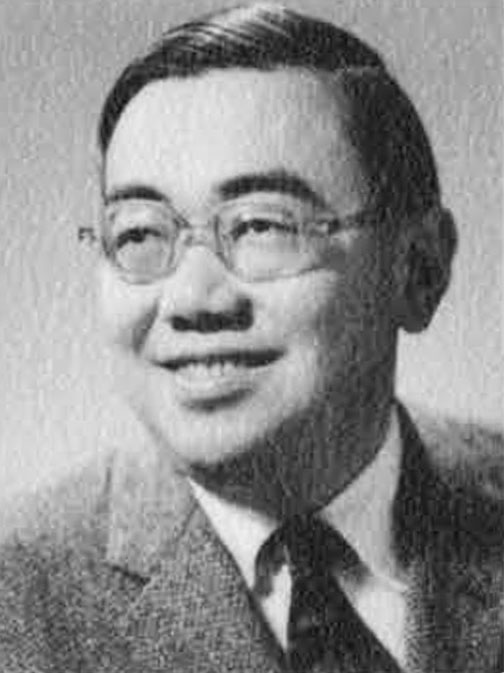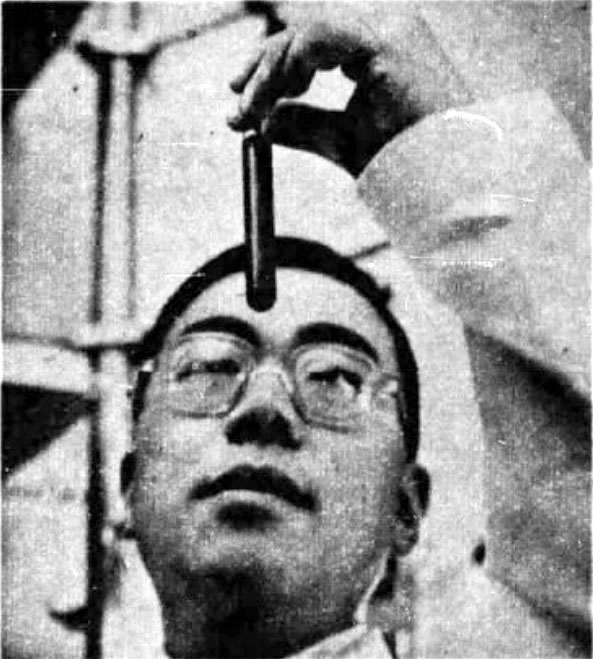David Y. Hsia, MD, 1925-1972
By Emma Florio, Archives & Research Specialist
 |
|
Portrait of Hsia ca. 1962. From Galter Library Special Collections. |
David Yi-Yung Hsia was born on August 22, 1925, in Shanghai, China. As a boy, his family moved to England when his father Ching-lin Hsia, a diplomat and expert in international law, became Press Attaché (a media liaison) in the Chinese Embassy in London. In 1940, the family moved again when his father was transferred to the Chinese Embassy in Washington, DC, where David attended high school. He earned his BS from Haverford College in 1944 and his MD from Harvard in 1948. In 1949, he married Hsio-Hsuan Shih, also the child of a diplomat, and they went on to have four children.
After completing an internship at Charity Hospital in New Orleans, Hsia began to train and specialize in pediatrics. He returned to Harvard as a research fellow and instructor in pediatrics in the early 1950s. While there, he was part of a team that pioneered the use of gamma globulin, a protein in blood plasma that had been used in the polio vaccine, to prevent the spread of hepatitis. From 1956-57, Hsia did further training in biochemistry and genetics at University College London’s Galton Laboratory, which shaped the trajectory of the rest of his career.¹
In 1957, Hsia was hired as an Associate Professor of Pediatrics at Northwestern University Medical School, becoming a full Professor in 1960. He directed the Division of Biochemistry and Genetics at Children’s Memorial Hospital (now Lurie Children’s). For the next 12 years, Hsia focused his research on the genetic metabolic diseases galactosemia (the inability to metabolize the milk sugar galactose) and phenylketonuria (the inability to break down the animo acid phenylalanine, leading to brain damage and intellectual disability, also known as PKU), both of which affected infants. A series of discoveries related to PKU included the ability to detect it in parents before it appeared in their children, the development of a more effective blood test, and the creation of a special diet for children born with PKU, which prevented the buildup of phenylalanine and the associated brain damage.
 |
|
Hsia working in the lab, from a Chicago Tribune feature on his research, November 15, 1959. |
Hsia’s work in detecting and treating PKU earned him great acclaim—each new discovery made national headlines. In 1965 he was the recipient of the American Academy of Pediatrics’ E. Mead Johnson Award for his PKU research and in 1970 he received Chicago’s City of Hope award, in part for helping to organize a program in Chicago to test babies for PKU. This prominence led to his inclusion on a team of 25 doctors sent to Vietnam in 1971 by the American Medical Association to help upgrade the Vietnamese medical system. He also traveled to Europe, where he lectured in multiple countries and consulted at the University of Zurich’s Children's Hospital.
In 1969, Hsia was appointed Chair of Pediatrics at Loyola University’s Stritch School of Medicine and Chief of Pediatrics at Loyola’s Medical Center. Only two years later, he was involved in a serious car accident that eventually led to his death on January 26, 1972, at age 46. Reflecting his prominence and the wide-reaching impact of his work, his death was reported in newspapers across the country. His memorial service was held at Northwestern’s Alice Millar Chapel, in recognition of his long connection to the school.
Endnotes
1. Founded in 1911 by the originator of eugenics Francis Galton, the Galton Laboratory moved away from the study of eugenics following World War II and focused on genetics and biometry until it closed in 2013. In 2018, University College London began an inquiry into the school's historical links to the eugenics movement.
Selected References
Moss, Ruth. “New Hope for Doomed Children.” Chicago Tribune, Nov. 15, 1959.
“PKU medic at Loyola succumbs.” Berwyn Life (Berwyn, IL), Feb. 2, 1972.
Updated: April 17, 2025